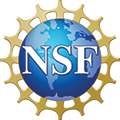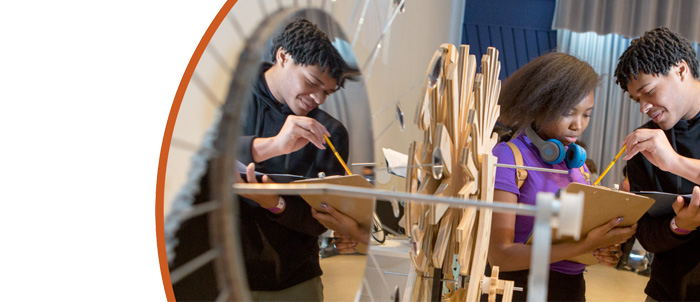Expansive Meanings and Makings in ArtScience
Effective Years: 2013-2019
Abstract
Expansive Meanings and Makings in ArtScience will design and develop an innovative model of ArtScience learning for middle and high school age youth from communities underrepresented in STEM fields. ArtScience is an emerging movement emphasizing commonalities in thinking practices used by artists and scientists as they explore complex 21st century problems. Youth will engage in ArtScience inquiries in two scientific domains of significance to them and their communities: climate change and the human microbiome. The project investigates the hypothesis that an ArtScience approach will expand opportunities for historically underrepresented youth to develop meaningful understanding of core ideas related to Earth?s systems, ecosystems and microbiology as well as increased fluency with scientific and artistic practices related to the interpretation, production, and use of complex scientific visualizations. Design and research activities will be carried out collaboratively in informal and formal learning environments: in Seattle with a youth theatre company, Red Eagle Soaring, that serves primarily Native youth, and in Boston with a public high school, Boston Arts Academy, that serves youth from underrepresented communities. A multidisciplinary team of learning scientists, scientists, and artists will collaborate in the research, including: the Chèche Konnen Center at TERC, University of Washington, Broad Institute, and locally-based artists.
In Seattle and Boston, youth will learn to interpret and investigate scientific visualizations from open access data exchanges. To help students connect with the larger, more complex visualizations, they will construct their own data on a smaller scale. Guided by participating scientists, artists and teachers, youth will learn to develop creative responses to the visualizations in ways that integrate scientific and artistic ideas, practices, materials, and concerns. This design-based research project will a) design and progressively refine an ArtScience model, b) document and analyze youths? engagement with ArtScience practices and their articulation with scientific practices, and c) assess growth in youths? conceptual understanding, fluency in use of scientific and artistic practices, and emerging identity relationships to science. A total of 100 youth will participate, 50 in each of two design cycles. Data sources will include videotapes of implementation sessions at each site, session log records, youth-generated artifacts, pre- and post-clinical interviews, and academic performance and attendance records. Data will be analyzed using interaction analysis, descriptive data analysis, discourse analysis, and life story and cognitive narratological approaches. Analyses will be coordinated across sites using shared, secure database and analysis software.
This research will establish an empirical foundation in ArtScience learning that articulates with the new science frameworks and mobilizes the intellectual and creative potential of youth from communities historically underrepresented in STEM fields. Major outcomes will include an evidence-based model of ArtScience learning and evidence-based design principles that can guide adaptation of the model in formal and informal settings serving underrepresented youth. The model, design principles, assessment results, and examples of ArtScience inquiries will be shared widely through professional and community networks, locally, nationally and internationally. Through these efforts the project addresses both the STEM learning environments and broadening participation of the EHR Core program.




